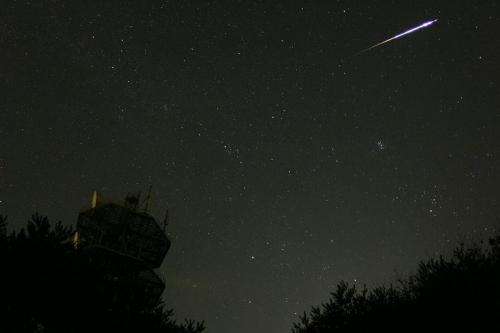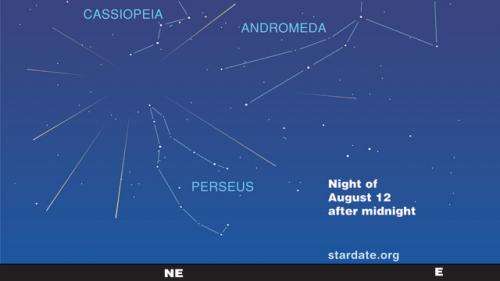How to enjoy the 2011 Perseid meteor shower

It’s time for the Perseid Meteor Shower and you want to bag some meteors (shooting stars), but how? Maybe you just want to know where and what time to look, or perhaps you are having a Perseid party and you want everyone to have a great time.
If so, then please read on...
First, you don’t need a telescope or binoculars or any high tech equipment. You just need your own eyes and glasses if you wear them.
It’s a good idea to be away from bright lights and if possible have a red light torch or red flashlight, but most importantly try to get your eyes adapted to the dark.
Bright light will instantaneously ruin dark adaption so shining flashlights into faces is a big no-no and looking directly at the Moon isn’t going to help either. Position yourself so you don’t get the Moon in your view.
The Perseids don’t rain down out of the sky; they appear every few minutes and this year, you may only see the rarer bright ones and very bright fireballs due to the full Moon that will be up, and the glare it will unfortunately provide. But if you can get in a good position to avoid the glare, sit back and wait to see some meteors. This is totally worth the wait, but you need to be comfortable or you will give up, go indoors and not see any.
The best bet is to get a reclining garden chair or airbed or something similar to lay back and relax upon. Lots of people put those yard trampolines to very good use and use them as meteor observing platforms.
Dress warmly and cover yourself with blankets or a sleeping bag, August is a summer month, but it can get quite chilly at 1:00am and this will make you give up early too, so stay warm.
Have plenty of drinks and snacks ready so you can basically camp out and not have to keep on getting up, or doing things, because this is when you will, ironically, miss the best fireball of the evening.

Where do I look and what direction?
This is the most common question I hear people ask about meteor showers and the answer is very simple.
Follow the above comfort guidelines, look up and away from the Moon and fill your gaze with the sky.
Perseid meteors originate from a fixed point in the sky called the radiant, which is in the constellation of Perseus, however meteors will appear in any part of the sky. You can trace their paths back to the radiant.
After midnight, look towards the East/Northeast part of the your sky to find Perseus. To find it look for the easily identifiable constellation Cassiopeia, the big “W” in sky! Perseus is just below Cassiopeia.
You can draw, take pictures and even video the Perseids, but the simplest and most enjoyable thing is to lay back, relax and be patient and you will be rewarded with a great a view.
The best times to look will be in the dark pre-dawn sky on August 11, 12 and 13, 2011.
You can also follow along with Universe Today and Meteorwatch.org with #meteorwatch on twitter. Ask questions, see what others are seeing, share your experiences and images using the hashtag #meteorwatch
Most of all, enjoy your Perseid experience and have fun!
Source: Universe Today




















